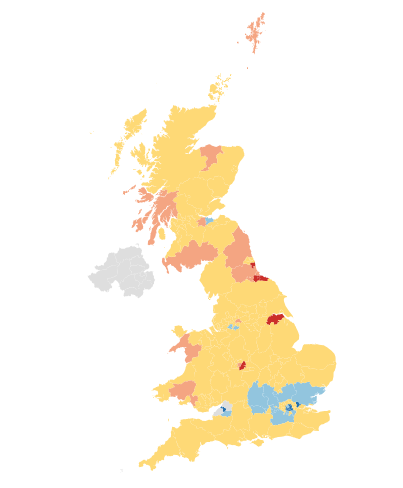What is National Insurance?
National Insurance is a social insurance scheme, under which people become eligible for particular social security benefits – known as “contributory benefits” – through a history of contributions to the scheme made by themselves and by their employers.
Like Income Tax, National Insurance Contributions (NICs) are deducted at source from people’s earnings. They are then paid into the National Insurance Fund, a proportion of which is allocated to the National Health Service, with the rest funding contributory benefits.
There are four different “Classes” of NIC, applicable to different types of person. Class 1 contributions are the basic employees’ (primary) and employers’ (secondary) contributions, which are deducted from employees’ gross pay by employers. Class 2 and Class 4 contributions are paid by self-employed people whose profits have reached a certain amount, and they are paid as a fixed weekly amount and annually as part of the Self-Assessment process, respectively. Class 3 contributions are paid voluntarily, to fill gaps in one’s contributions record.
In his 2022 Spring Statement, UK Chancellor Rishi Sunak announced that there would be an increase in the level of earnings at which people start paying National Insurance contributions (NICs) from £9,880 to £12,57, starting in July 2022. The rise aligned the NICs thresholds (the primary threshold and lower profits limit) with the point at which people begin paying income tax on their income (the income tax personal allowance). These thresholds are now though set to remain fixed though until April 2026, when previously they have regularly increased by inflation each year.
From April 2022, a new, UK-wide 1.25 per cent Health and Social Care Levy, ringfenced for health and social care will be introduced on top of the existing rates of national insurance. This was a tax rise announced by the government in the autumn of 2021. All working adults, including those over the state pension age, will pay the levy. The rates of dividend tax will also increase by 1.25% to further fund health and social care.
Paying National Insurance contributions can build up an entitlement to certain state benefits with different types of contribution counting towards different types of benefit. Some benefits, however, are not linked to NI contributions.
State benefits which are linked to NI contributions are known as ‘contributory benefits’. These include the basic State Pension, the additional (Second) State Pension, contribution-based Jobseeker’s Allowance, contribution-based Employment and Support Allowance, Maternity Allowance, and bereavement benefits.
On reaching age 16, every person is issued with a National Insurance Number (NINO), which identifies his or her contributions record throughout from that point on.
Background
The introduction of National Insurance under the National Insurance Act 1911 was one of the first steps towards the creation of the welfare state.
It was first proposed in the 1908 “People’s Budget” of David Lloyd George, along with a dramatic expansion of the scope of Income Tax and plans for a system of old age pensions (which would be funded at this time by general taxation).
The scheme, which came into effect in July 1912, was intended to create a national system of insurance for working people against illness and unemployment. All wage-earners aged between 16 and 70 were obliged to contribute 4d per week, while employers paid 3d and the state 2d. In return, workers were entitled to a level of free medical care and advice, and a “dole” of 7 shillings per week for up to 15 weeks per year in the event of unemployment.
In its early days, the scheme was administered by “approved societies”, voluntary friendly societies authorised and underwritten by the Government, and regulated by four Insurance Commissions. The powers of the Insurance Commissions were assumed by the new Ministry of Health (and the Welsh and Scottish Boards for Health) in 1919. In 1925, the Ministry of Health was charged with the administration of contributory pensions under the Old Age, Widows’ and Orphans’ Contributory Pensions Act 1925, which replaced the older system.
The system was “nationalised” in 1945, with the creation of the Ministry for National Insurance, and the work of approved societies was taken over by “local executive councils” in 1948. The National Insurance Act 1948 and National Assistance Act 1948 established the modern welfare state that persists today.
The post-war National Insurance reforms were based on the Beveridge Report, produced in 1942 by William Beveridge. It built upon Lloyd George’s scheme, proposing a system of “social security” in return for contributions in order to provide a minimum level of income for all.
Throughout its history then, the contributory principle has underpinned National Insurance. Concerns, however, have been voiced in recent years about the undermining of this principle.
Today, National Insurance is administered by the Inland Revenue through the National Insurance Fund. This was established in its current form by the Social Security Act 1975, which merged the National Insurance and Industrial Injuries Funds and the National Insurance (Reserve) Fund. In 1989, the Redundancy Fund was incorporated into the Fund.
Up until 1990, shortfalls in the Fund had been met by a central government grant. Rising contribution levels during the economic boom of the 1980s, however, led the Government to abolish this that year. The recession that followed led to its reintroduction in 1993. In 1999, the Fund was transferred from the Department of Social Security to the Inland Revenue.
Controversies
In the course of National Insurance’s history, the link between individual National Insurance contributions and the benefits received has eroded. The introduction of deduction at source for NICs in 1945 along with the Pay As You Earn collection system for Income Tax blurred the distinction between the two from the start. Indeed, today, many regard National Insurance simply as an alternative form of income tax.
This blurring accelerated under the previous Government. In 2001, the Climate Change Levy was introduced as a tax on energy use: it was intended to be “revenue neutral” for businesses, so the Treasury reduced the rate of employers’ NICs by 0.3 per cent – a move arguably inconsistent with the idea of National Insurance as contributory.
Moreover, ahead of the 2001 general election, it was widely reported that the Chancellor was planning to raise National Insurance contribution rates shortly after the election, in preference to raising Income Tax in order to fund increased NHS spending.
The Government went into the June 2001 election ambiguous on the matter, but in the Budget of April 2002, Chancellor Gordon Brown announced that the rate of NICs would rise by 1p in the pound from April 2003. This would also apply to earnings above the Upper Earnings Limit, which was previously an absolute cap. The balance of the National Insurance Fund has also been used to cover shortfalls in other expenditures, it has been alleged.
Increases in NICs are particularly controversial for business, insofar as they increase costs for employers, and not just employees as increases in Income Tax do. As such, increasing NICs can have an impact on unemployment, as the cost renders employers unwilling to take on new staff. April 2002’s announcement was also opposed by many in the business community as making it harder for them to maintain their already-struggling pension schemes.
The increasing of means-testing for eligibility for benefits has also undermined the principle that contributions entitled a contributor to those benefits, other conditions notwithstanding. At the same time, the diminution of the importance of the Basic State Pension in respect of other retirement benefits has led some to call for the replacement of National Insurance with an explicitly tax-based alternative.

















